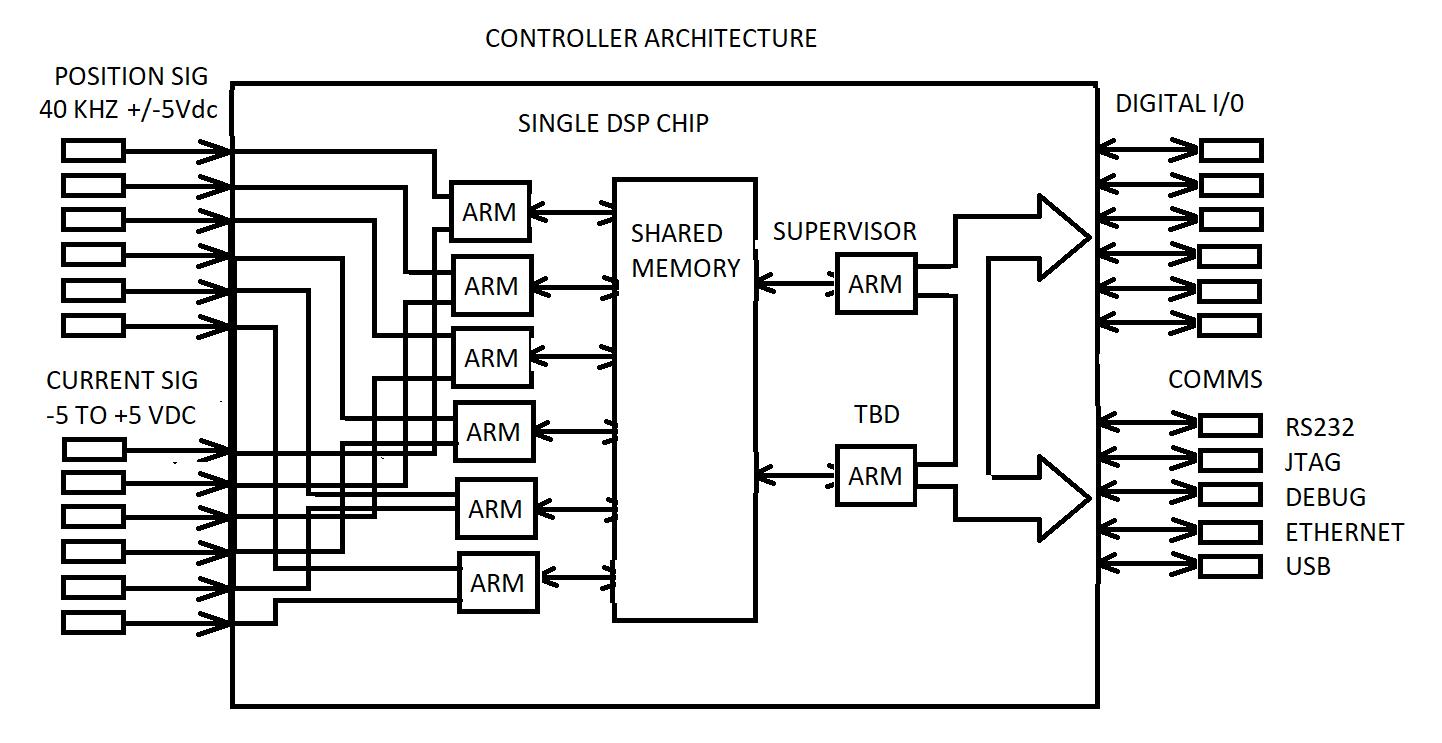Other Parts Discussed in Thread: TMS320F28379D, TMS320F28388D
Number: CS0308807: Advice about DSP selection
I need to select a DSP for our future magnetic bearing controllers of our own manufacture and design and programming. We need to control 12 channels of high speed analog inputs and pwm outputs at at least 40 KHz each.
I am enamored at the idea of using 12 ARM processors to bump up the speed of the calculations by about a factor of 12 via parallel computing. There will be notch filter calculations, pid loop calculations, and pwm calculations for each of the 12 channels, all identical in its equations and models from Simulink.
You have so many processors to select from that I decided to ask for TI's help. I foresee using dual DSP's each having 8 ARM cores. Can you please steer me in the right direction?



